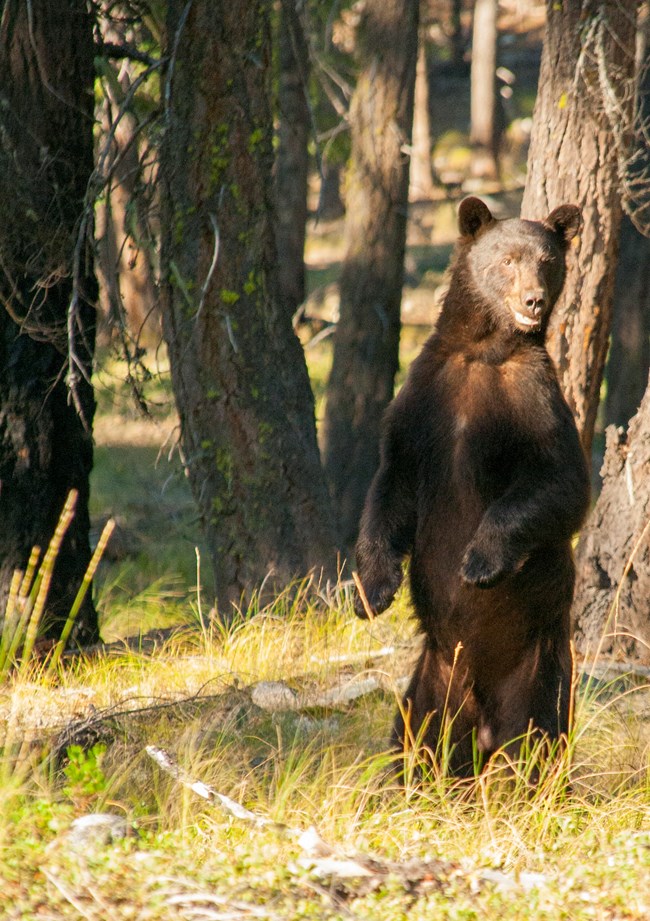
NPS/Bender Over one-third of the 1,586 “black” bears observed in the North Cascades ranged from nearly white to dark brown. Regardless their color, black bears lack grizzly bears’ prominent shoulder hump and long, “rototiller” front claws. With short, curved claws like grappling hooks and powerful muscles in their rears and hind legs, black bears are agile tree climbers. In the North Cascades you are sharing a place which is home to bears. Most people who see a bear in the wild consider it the highlight of their trip. The presence of these majestic creatures is a reminder of how privileged we are to share some of the country's dwindling wilderness. Proper food storage is essential and required (by law) for the health and safety of humans and animals in North Cascades National Park Service Complex. Please report all bear sightings to a park ranger. Note the location of the sighting, length of observation, distance from the bear, and description of the bear and its activity or behavior. Additional Resources How to Pack a Bear Canister - Learn how to pack a bear canister for travel in the backcountry. |
Last updated: March 20, 2018
